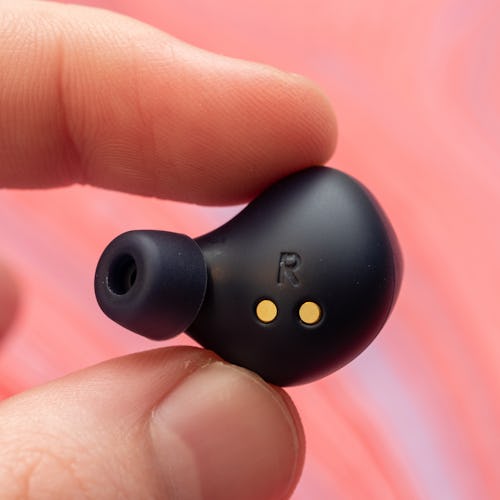
For as far as Bluetooth earbuds and headphones have come, it’s important to remember that they’re working on technology that’s just over 20 years old.
Bluetooth is one of the most important open technologies in the world, right up there with Wi-Fi. While the Bluetooth spec is frequently updated, the underlying technology for Bluetooth audio, the most ubiquitous usage for Bluetooth most people depend on, hasn’t been meaningfully revamped for nearly its entire existence.
This is where Bluetooth LE Audio comes in. The spec has been available for about two years for device makers to work on, but the first products to feature it should be released this year. It promises not only to improve the experience we have with current audio use cases, but build a foundation for new applications that weren’t possible before. It truly is a new generation of technology. Even better, it will be compatible with any Bluetooth 5.2 or newer-equipped device, which means most phones and audio devices from the last two years should be upgradeable to Bluetooth LE Audio via firmware update.
Input spoke with Nick Hunn, CTO of WiFore Consulting, and member of Bluetooth SIG, the organization that controls the Bluetooth spec. Hunn is the author of Introducing Bluetooth LE Audio and was one of the key developers behind Bluetooth LE Audio.
“We’re providing a toolbox that enables the next two decades of Bluetooth audio,” Hunn says. “We’re now ahead of the game in terms of what applications developers are looking at.”
The toolbox metaphor is the most apt way to look at Bluetooth LE audio. Yes, it will make the next generation of wireless earbuds and headphones sound and work better, but it also opens a whole new world of possibility for what and where we’ll be able to listen to as well.
Turning up the quality
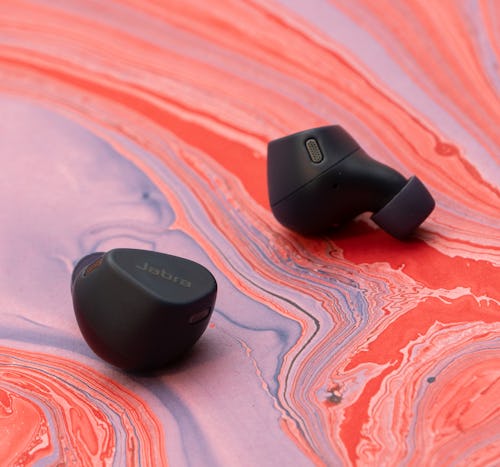
The feature of Bluetooth LE Audio that will make the most immediate impact on the products we use day to day is the new audio codec the spec includes called low complexity communications codec (LC3), which is meant to supplant the SBC codec as the new baseline, royalty-free wireless codec.
LC3 offers a number of advantages to SBC, namely in the quality of the audio experienced by the end-user. LC3 not only provides better sounding audio at the data rates most current Bluetooth earbuds operate at, but can maintain that quality in use cases where the bitrate needs to be lowered.
This is where Bluetooth LE Audio will make the biggest difference for our current use cases. Earbuds and headphones that switch to LC3 as their codec over SBC will sound better thanks to a more advanced compression algorithm, while devices that do choose to lower their data rate will benefit from increased battery life without sacrificing much in quality.
Here’s a demo provided by Bluetooth SIG that illustrates LC3’s performance at various bitrates.
This is going to make the biggest difference for earbud and headphone developers with an eye on Android users. AAC, the open source codec championed by Apple for years, has long been plagued by performance issues on Android, where it both sounds worse and uses more energy than SBC. Apple, however, uses AAC over SBC because, when the OS and hardware are optimized for AAC’s method of compression, you can get much better sounding audio than standard SBC.
If you want your device to sound better on Android phones, you need to rely on licensed codecs like Qualcomm’s aptX, or Sony’s LDAC. While these codecs do offer higher quality in the form of better performing compression, battery life, and even support for higher bitrates, earbud and headphone makers need to pay a license to each respective company in order to use them. LC3 is included with the standard Bluetooth license, so there’s no added cost to support it.
Hunn told me that inclusion of LC3 will be required in any device that wants Bluetooth LE Audio certification going forward, just like SBC inclusion is required now in the current audio spec. Given how many other technical improvements LE Audio provices, it’s hard to see any reasonable device maker holding out.
“We believe that LC3 is as advanced as any other codec out there. There’s going to be lots of marketing jargon from [licensed] codecs, and it will ultimately be up to the platform and device makers to decide what codec gets priority, but LC3 is going to be highly competitive.”
LC3 will be required in any device that wants Bluetooth certification going forward.
Going forward, we could see some earbuds and headphones, especially those in the budget space, abandon LDAC and even aptX support if LC3 proves to be the leap in quality and efficiency Bluetooth believes it to be. At the least, this would mean that wireless audio battery life is about to get a lot better, but it could also mean great earbuds come down in price thanks to the elimination of license fees for aptX and LDAC.
aptX has decent odds of sticking around since it’s included with any Qualcomm SoC for phones and the company’s many chipsets for earbuds and headphones. However, Android’s support for manual codec switching means that it will at least be worth users' time to A/B test LC3 against aptX to see if they can tell the difference.
This does not mean that every iOS user is going to experience the advantages of LC3 like Android users. AAC being open source means there’s less of a cost savings, if any, to cut it from a product. Apple will need to include LC3 support to maintain its Bluetooth license, so earbuds and headphones that only support the basics will tap into it, but as long as Apple is pouring resources into being the best at AAC decoding, that codec’s future is more certain in my view. iOS also doesn’t let users select the codec they want to use.
What Bluetooth LE Audio does not do is increase the overall bandwidth of Bluetooth. This is a limitation Apple, which was the first to bet on a totally wireless future, has recently been open about wanting to address. This isn’t the biggest deal as AAC and aptX already do a great job of maintaining audio fidelity at lower bitrates, and LC3 is going to bring that pedigree to even more devices. It’s “near lossless” codecs like LDAC that will still need to work on custom solutions to overcome the bandwidth problem.
Supercharged multipoint connections
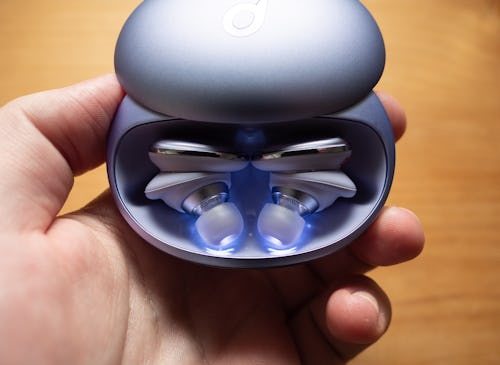
As exciting as LC3 is, it’s really just the surface of things Bluetooth LE Audio is going to usher in.
It starts with the foundation of the whole technology, Multi-Stream audio. Here’s something I didn’t know going into this story: Despite all the advancements made in wireless earbuds from every manufacturer, the current implementation of Bluetooth audio has no way of splitting the left and right channels independently to the appropriate earbud. Every single pair of Bluetooth earbuds on the market has had to rely on custom solutions to get around this critical limitation.
Currently, one earbud connects to your phone, and then piggybacks the appropriate stereo channel to the other earbud. While even dirt cheap wireless earbuds have gotten great at pulling this off, Bluetooth LE audio eliminates the need entirely with “Multi-Stream”. Going forward, Bluetooth LE Audio wireless earbuds can connect to your phone simultaneously. This will dramatically reduce latency between earbuds (within microseconds), increase connection speed, and theoretically mean one bud isn't draining faster than the other. Multi-Stream is also capable of transmitting more than stereo signals; it can broadcast full surround sound or spatial audio data without the need for custom software.
It also enables some brand new applications not previously possible. One example Hunn proposed was simultaneously issuing voice commands to your phone without interrupting the audio experience by leveraging the multiple data streams available.
In addition to Multi-Stream, LE Audio contains a huge upgrade to multipoint Bluetooth connections. . Earbuds, headphones, and Bluetooth speakers will be able to maintain multiple connections at once by default, instead of relying on custom multipoint solutions (most of which are limited to just two connections). Think of it as a universal version of AirPods’ signature iCloud device syncing feature. Gone will be the days of multipoint connections being a premium, albeit limited feature to upsell users.
New audio potential
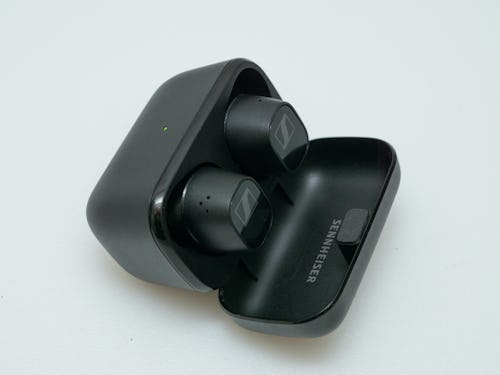
Then, there are the far-future applications that Bluetooth LE Audio is built for. These are applications we may never see come to fruition, but the tech is now here to make it happen.
This technology is called Broadcast Audio and it expands the possibilities of multipoint connections to the source device as well. The capabilities of Bluetooth LE Audio multi-stream also extend to audio sharing with friend’s devices, another feature currently reserved to custom solutions for a select number of devices like AirPods and Samsung’s Galaxy Buds.
Audio sharing via Bluetooth LE Audio has no limit to the number of devices you can share to, or manufacturer: like a silent disco for the masses. “You can have a whole playground of children all sharing the same audio feed from one phone as long as you stay within the range limits of Bluetooth,” Hunn told me.
I’d give universal audio sharing via Broadcast Audio pretty good odds of coming to market in some form. It’s the other use cases for Broadcast Audio that are arguably cooler, but have a longer shot of coming to market soon.
“You can have a whole playground of children all sharing the same audio feed from one phone.”
Bluetooth LE Audio includes support for location-based broadcasts over Bluetooth. This has several possible applications. One scenario Hunn proposed was a cafe could have silent TV’s playing that guests can opt in to listening to because the TV is constantly emitting a Bluetooth signal, but doesn’t disturb guests trying to listen to their own music or work in silence.
Movie theaters can also use Bluetooth LE Audio transmitters for guests that need assisted hearing devices, and instead of those guests having to pick up a special hearing aid at the box office (that normally uses mono channel sound), they can seamlessly tap into the theater’s feed seamlessly with their own earbuds or hearing aids for full stereo or even surround sound.
Broadcast Audio feeds can also be inserted dynamically. If you’re at an airport or train station, for example, you can opt-in to hear periodic updates from your departure gate without having to switch between your phone and the gate signal manually.
Great promise, greater uncertainty
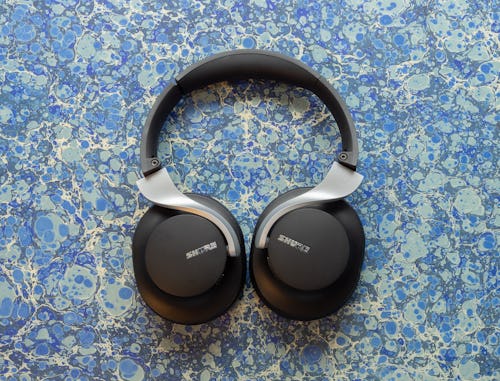
Now to address the Apple-sized elephant in the room: can we really expect a great, open and cross-platform solution to Bluetooth’s problems to become widely available when Apple is making the call on what iOS users get from it?
To be clear, I’m not suggesting that Apple won’t roll out any Bluetooth LE Audio features. The advancements in multipoint are simply too great for Apple to completely ignore. I’d be shocked if future versions of AirPods don’t support audio sharing to more than two pairs of AirPods, or lean on Multi-Stream to provide an even better Spatial Audio experience. Just don’t be surprised if Apple prevents third-party earbuds from tapping into the benefits of Bluetooth LE Audio on iOS devices and reserves the benefits for AirPods.
When I expressed these concerns to Hunn, he wasn’t quite as pessimistic in his take. “While we’re very hopeful that Google will get on board with [Bluetooth LE Audio’s improvements] we also believe that regulation in the hearing aid space will be a big driver of adoption.”
Essentially, if Broadcast Audio does get rolled out to help hearing aid users, potential holdouts could be forced to support Bluetooth LE Audio in certain ways to comply with new laws to govern Broadcast Audio Applications. So, AirPods may be able to tap into public Broadcast Audio signals for accessibility’s sake, but still prevent users from sharing audio with third-party earbuds. Imperfect but better than nothing.
Our headphones and earbuds are about to get way better very quickly.
Google’s Android 13 is already supporting LC3 in beta, signaling full support for Bluetooth LE Audio in the full release this year. Microsoft Windows, which is known to have issues with Bluetooth audio management, is another likely candidate to embrace Bluetooth LE Audio’s full suite. If this bears fruit, then expect Bluetooth LE Audio earbuds to offer dramatically better user experiences on these devices once software and firmware updates roll out. AirPods’ simplicity for all, no AirPods required.
Broadcast Audio itself is an even bigger question. While some countries may roll out Bluetooth LE Audio transmitters to public spaces in the name of accessibility, I’d be stunned if the U.S. was on the leading edge of that push. We can’t even figure out how to roll out 5G. Broadcast Audio in public is probably something Americans will hear about or experience when we go abroad instead of something we’ll use consistently.
Ultimately, I think Bluetooth LE Audio is going to help the Bluetooth applications we’re already used to evolve. So yes, Bluetooth LE Audio means our headphones and earbuds are about to get way better very quickly. Depending on how well audio-sharing is rolled out, it’s also going to be much easier to share audio with friends regardless of what you’re listening on.
As for the loftier ambitions of Bluetooth LE Audio, that’s more of a waiting game, but I’d be lying if I wasn’t a bit impatient to see what fruit it will bear.







